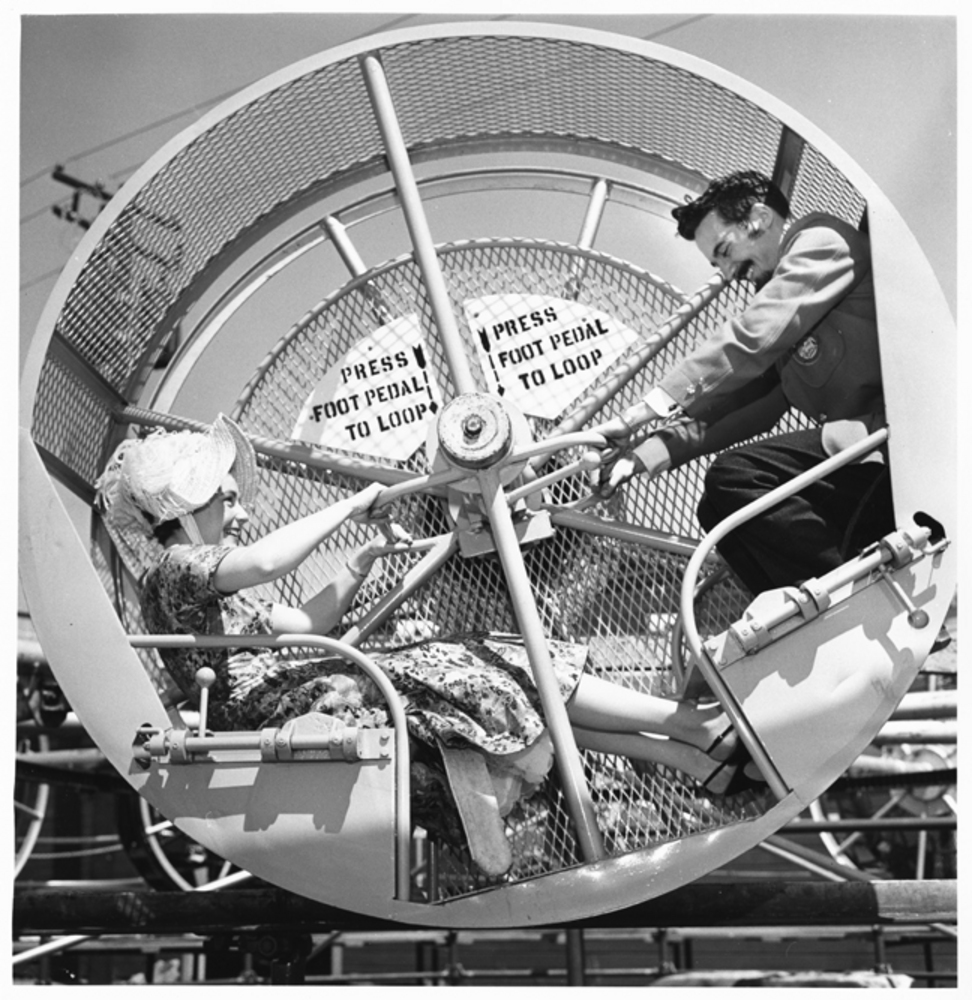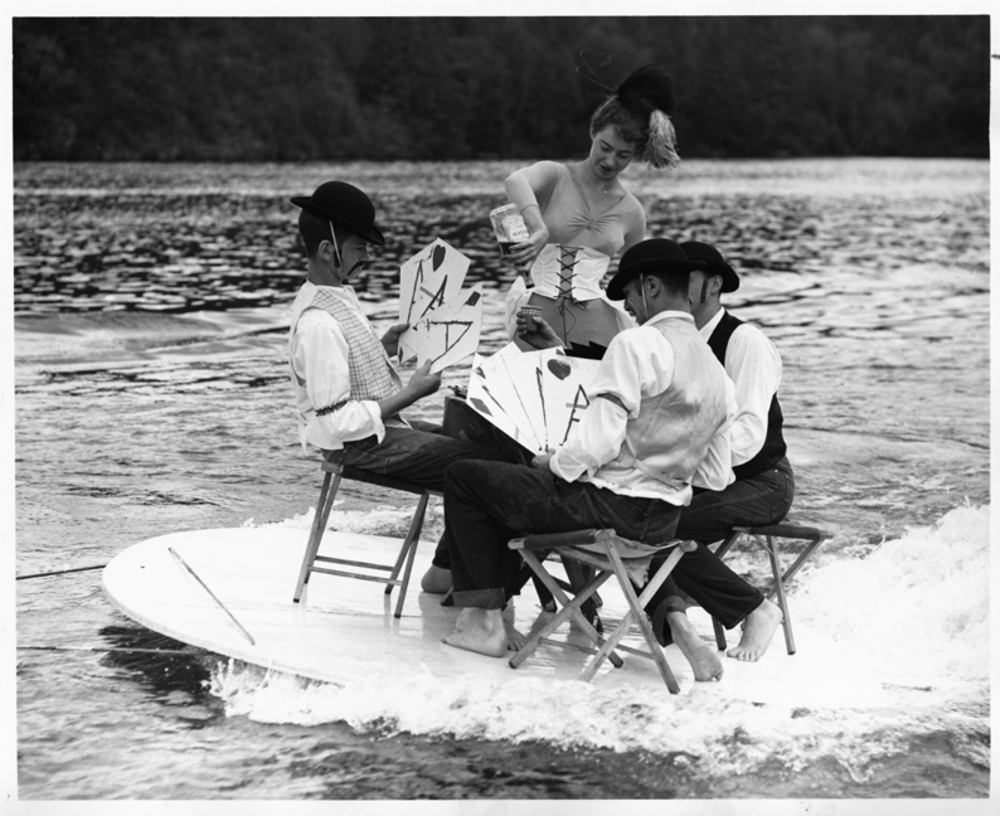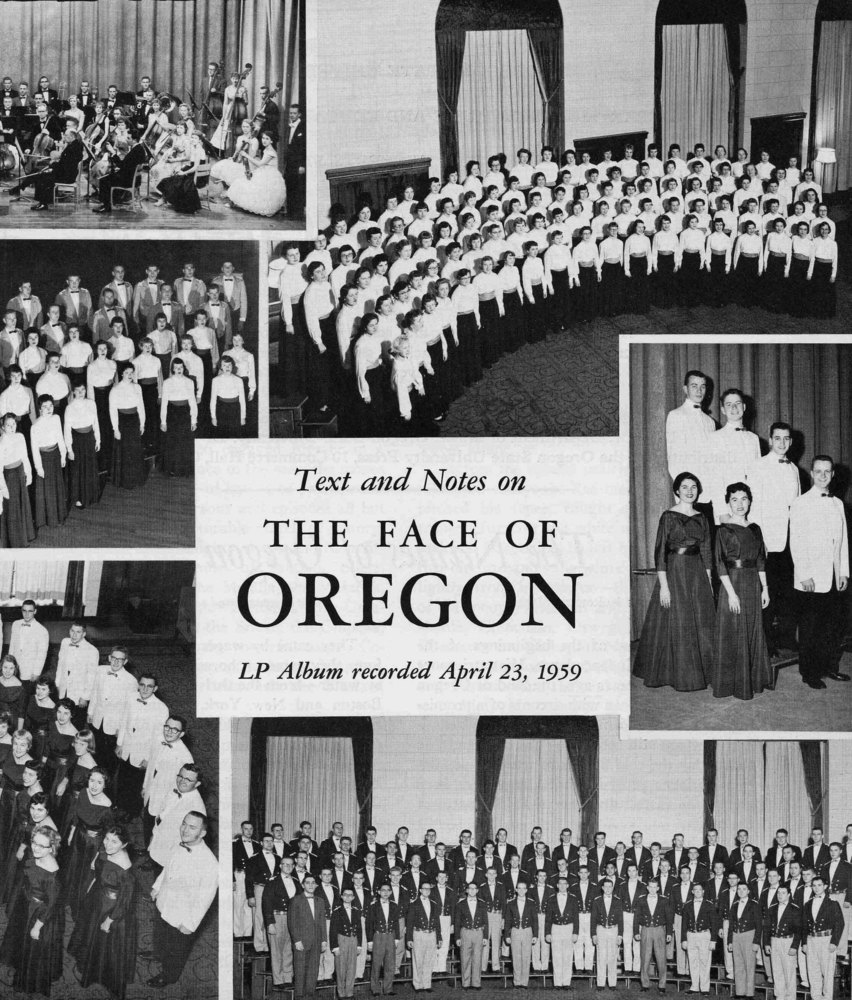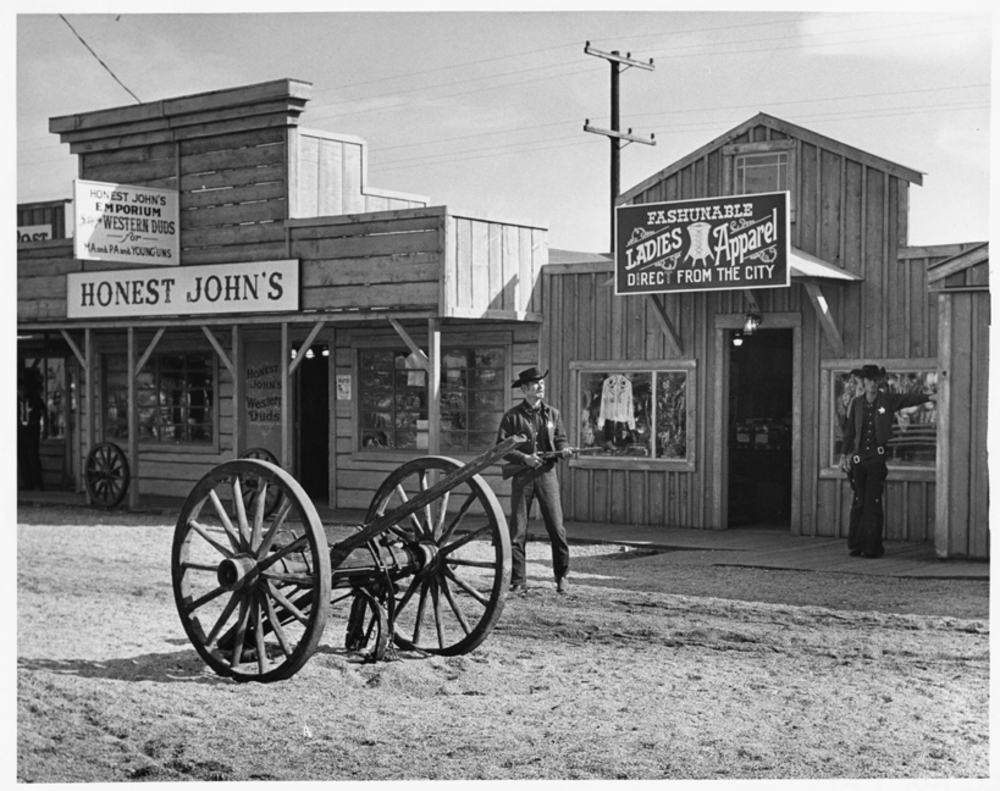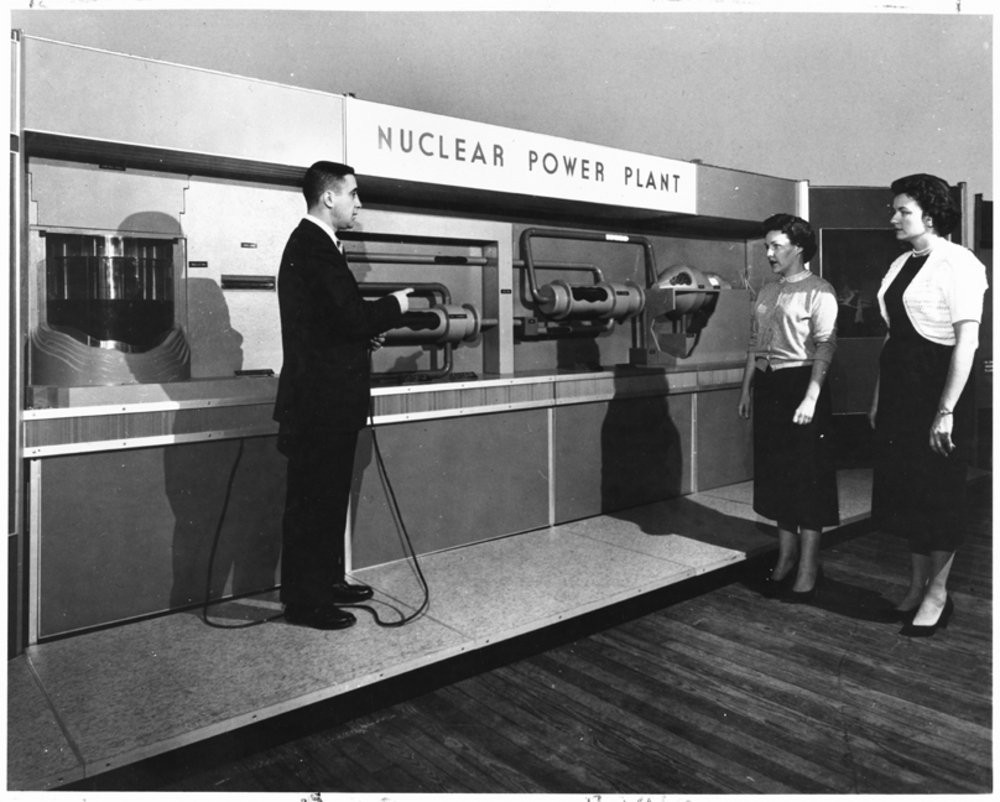Oregon became the thirty-third state on February 14, 1859. A century later, Portland hosted the Oregon Centennial Exposition and International Trade Fair to commemorate one hundred years of statehood. The fair, which lasted from June 10 to September 17, took place on sixty-five acres along the Columbia River north of the city. Exhibits and entertainment were housed in an eleven-acre arena, the Gayway amusement park bordered the ten-acre International Garden of Tomorrow, and Adventureland covered eighteen acres.
Visitors strolled through the mammoth Exposition building, where more than 200 companies, government agencies, and private and public organizations had exhibits. Nineteen Oregon counties and twenty-two foreign countries were also represented. Local businesses such as Alpenrose Dairy, Hyster, KXL Radio, Tektronix, and West Coast Airlines had displays, and the Atomic Energy Commission used 5,000 square feet to laud the benefits of nuclear energy. There was even a pool so the International Water Follies could perform a water ballet.
Among the outdoor attractions was the Cameo House, a full-sized home showcasing the latest décor and appliances. In the International Garden, people could visit the Japanese Tea House and the Pavilion of Religion and see a giant floral clock. Organizers used plant species from around the world to ensure constant blooms during the hundred days of the fair.
Adventureland made up the largest portion of the Exposition grounds. Visitors rode an open-air train to visit a Bavarian Beer Garden, a covered wagon train, and a working sawmill where visitors could turn trees into timber. An Indian Village featured two totem poles, tepees, and elaborate regalia. By far the most popular attraction was the Frontier Village, a re-creation of an Old West town from the 1870s, complete with a dance hall, livery stable, church, emporium, saloon, post office, and hotel. Actors performed gunfight shows daily.
Actor Raymond Burr was the master of the opening ceremonies, and Roy Rogers and Dale Evans performed with their horse, Trigger. Harry Belafonte, Lawrence Welk, and Merle Travis performed, and CBS broadcast "Art Linkletter’s House Party" from the site.
The final days of the Exposition featured The Mighty Oregon Story, a show that included 700 performers and required seven stages to tell the hundred-year history of the state. The show included wagon trains, motorcycles, singers, exotic costumes, a full orchestra, and the Hollywood Bowl Ballet.
One of the last remnants of the fair can be found today in the Kenton neighborhood, where a thirty-foot-tall Paul Bunyan watches over Denver Avenue. The statue was built to greet visitors on their way to the fairgrounds and is now listed on the National Register of Historic Places.
Nearly 1.5 million people visited the Exposition during its hundred days, a modest number compared to similar events. Fifty years earlier, in 1905, 2.5 million people had attended the Lewis & Clark Exposition in Portland. In 1962, the Seattle world’s fair drew 9.6 million visitors, and 41 million people visited the Brussels World’s Fair in only two months of 1958.
-
![Oregon Centennial Expo, 1959.]()
Oregon Centennial Expo, 1959, bb006269.
Oregon Centennial Expo, 1959. Oreg. Hist. Soc. Research Lib., bb006269
-
![Mike Huycke, Sandra Shaw, Pat Goan, Dave Wells Village, Oregon Centennial Expo, 1959.]()
Oregon Centennial Expo, 1959, bb006271.
Mike Huycke, Sandra Shaw, Pat Goan, Dave Wells Village, Oregon Centennial Expo, 1959. Oreg. Hist. Soc. Research Lib., bb006271
-
!["The Face of Oregon" album cover, recorded in commemoration of the 1959 Oregon Centennial.]()
Face of Oregon, p.1.
"The Face of Oregon" album cover, recorded in commemoration of the 1959 Oregon Centennial. Oreg. State Univ. Archives
-
!["Doc Holliday and his deputy, the Durango Kid, stage gunfights daily in the Frontier Town," Oregon Centennial Expo, 1959.]()
Oregon Centennial Expo, 1959, bb006272.
"Doc Holliday and his deputy, the Durango Kid, stage gunfights daily in the Frontier Town," Oregon Centennial Expo, 1959. Oreg. Hist. Soc. Research Lib., bb006272
-
Oregon Centennial Exposition of 1959, postcard of, A2004-002.606.
Postcard image of Portland's Centennial Exposition of 1959. City of Portland Stanley Parr Archives & Records Ctr., A2004-002.606
-
![Exhibit at Centennial Expo, 1959.]()
Oregon Centennial Expo, 1959, bb006267.
Exhibit at Centennial Expo, 1959. Oreg. Hist. Soc. Research Lib., bb006267
-
![Oregon Centennial Expo, 1959.]()
Oregon Centennial Expo, 1959, bb006268.
Oregon Centennial Expo, 1959. Oreg. Hist. Soc. Research Lib., bb006268
-
![Joe Hughes and Brian Kelling, Frontier Village, Oregon Centennial Expo, 1959.]()
Oregon Centennial Expo, 1959, bb006270.
Joe Hughes and Brian Kelling, Frontier Village, Oregon Centennial Expo, 1959. Oreg. Hist. Soc. Research Lib., bb006270
Related Historical Records
Map This on the Oregon History WayFinder
The Oregon History Wayfinder is an interactive map that identifies significant places, people, and events in Oregon history.
Further Reading
Bottenberg, Jeanna, and Ray Bottenberg. Vanishing Portland. Charleston, S.C.: Arcadia Publishing, 2008.
Curran, Chrissy. "The Architectural Legacy of the 1959 Centennial Exposition." Oregon Historical Quarterly 220: 2 (Summer 2009).
Hughes, Harold. "Rose Festival-Centennial Program Issue." Sunday Oregonian, June 7, 1959.

